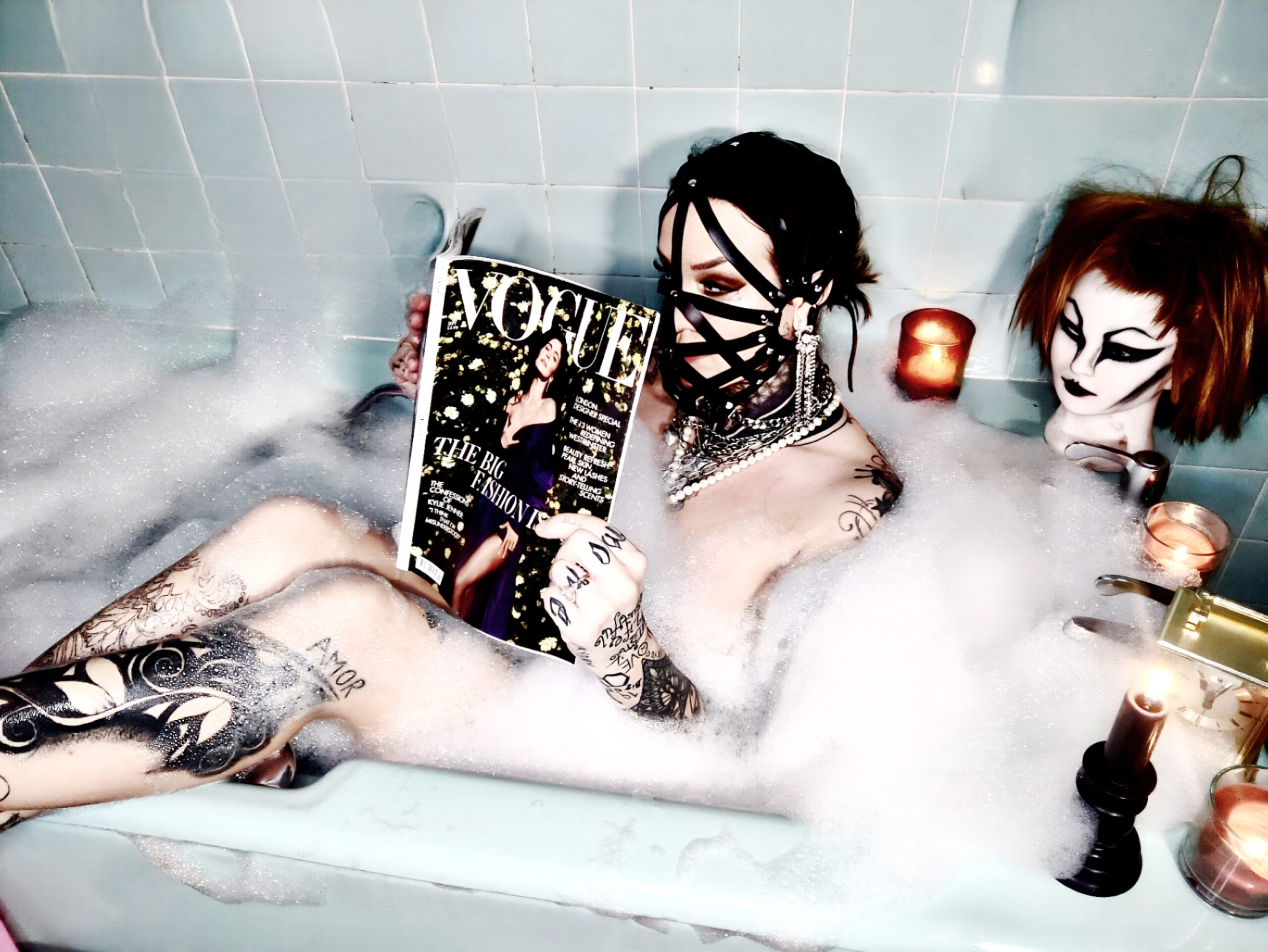Defining Pansexuality

Pansexuality is a sexual orientation characterized by romantic or sexual attraction that extends beyond gender identity. Unlike bisexuality, which often refers to attraction to two genders, pansexuality encompasses attraction to people of all genders, regardless of how they identify or express themselves. This inclusivity makes it a fluid and expansive concept, recognizing the diverse spectrum of human experience and expression.
Core Concept of Attraction
Pansexuality is an identity defined by romantic and sexual attraction that transcends traditional gender boundaries. Unlike bisexuality, which often implies attraction to two specific genders, pansexual individuals are attracted to people of all gender identities. This includes transgender, non-binary, and genderfluid individuals, as well as those who identify as male, female, or somewhere in between.
Beyond the Binary: Gender Fluidity and Spectrums
Pansexuality goes beyond a simple binary understanding of gender. It embraces the fluidity and diversity of human experience. Individuals who identify as pansexual are attracted to people regardless of their gender identity or expression.
This means that attraction is not limited by societal norms or traditional categories. It acknowledges that gender is a spectrum, and attraction can exist across that spectrum. Pansexuality celebrates the beauty of individual expression and the richness of human connection, fostering inclusivity and acceptance for all.
Attraction to All Genders and Identities
Pansexuality is a sexual orientation characterized by romantic or sexual attraction that extends beyond traditional gender boundaries. Unlike bisexuality, which often implies attraction to two specific genders, pansexual individuals are attracted to people of all gender identities.
This means that attraction is not limited by societal norms or traditional categories. It acknowledges that gender is a spectrum, and attraction can exist across that spectrum. Pansexuality celebrates the beauty of individual expression and the richness of human connection, fostering inclusivity and acceptance for all.
- Pansexual individuals may be attracted to people who identify as male, female, transgender, non-binary, genderfluid, or any other gender identity.
- It’s important to remember that pansexuality is about attraction, not about having a specific type of relationship.
- Pansexuality is a valid and respected sexual orientation.
Historical Context of Pansexuality
Understanding the historical context of pansexuality sheds light on its evolution as a concept and its significance in the broader LGBTQ+ movement. While the term “pansexual” itself emerged more recently, the underlying idea of attraction extending beyond traditional gender binaries has existed for centuries. Historical accounts reveal instances of individuals expressing love and desire for people regardless of societal norms and expectations surrounding gender.
Early Usage and Evolution of Terminology
Early usage of terms related to pansexuality can be traced back to ancient civilizations. Though not explicitly using the term “pansexual,” writings from societies like Greece and Rome documented relationships and expressions of love that defied rigid gender boundaries. These historical accounts demonstrate that the concept of attraction transcending traditional gender norms has a long and complex history.
The 20th century witnessed a gradual shift in language and understanding around sexuality. In the early part of the century, terms like “polysexual” and “omnisexual” were used to describe individuals attracted to multiple genders. These terms, however, often lacked clarity and were not widely accepted.
The term “pansexual” itself gained traction in the late 20th century, becoming more prevalent within LGBTQ+ communities as a way to articulate an identity encompassing attraction to all genders.
With the growing visibility of the LGBTQ+ movement and evolving understandings of gender identity, the term “pansexuality” continues to evolve. It’s essential to recognize that language around sexuality is constantly changing, reflecting the diversity of human experiences and the ongoing quest for greater inclusivity and understanding.
Reclamation of the Term
Pansexuality is a sexual orientation characterized by romantic or sexual attraction that extends beyond gender identity. Unlike bisexuality, which often refers to attraction to two genders, pansexuality encompasses attraction to people of all genders, regardless of how they identify or express themselves. This inclusivity makes it a fluid and expansive concept, recognizing the diverse spectrum of human experience and expression.
- Pansexual individuals may be attracted to people who identify as male, female, transgender, non-binary, genderfluid, or any other gender identity.
- It’s important to remember that pansexuality is about attraction, not about having a specific type of relationship.
- Pansexuality is a valid and respected sexual orientation.
Understanding the historical context of pansexuality sheds light on its evolution as a concept and its significance in the broader LGBTQ+ movement. While the term “pansexual” itself emerged more recently, the underlying idea of attraction extending beyond traditional gender binaries has existed for centuries. Historical accounts reveal instances of individuals expressing love and desire for people regardless of societal norms and expectations surrounding gender.
Early usage of terms related to pansexuality can be traced back to ancient civilizations. Though not explicitly using the term “pansexual,” writings from societies like Greece and Rome documented relationships and expressions of love that defied rigid gender boundaries. These historical accounts demonstrate that the concept of attraction transcending traditional gender norms has a long and complex history.
The 20th century witnessed a gradual shift in language and understanding around sexuality. In the early part of the century, terms like “polysexual” and “omnisexual” were used to describe individuals attracted to multiple genders. These terms, however, often lacked clarity and were not widely accepted.
The term “pansexual” itself gained traction in the late 20th century, becoming more prevalent within LGBTQ+ communities as a way to articulate an identity encompassing attraction to all genders.
With the growing visibility of the LGBTQ+ movement and evolving understandings of gender identity, the term “pansexuality” continues to evolve. It’s essential to recognize that language around sexuality is constantly changing, reflecting the diversity of human experiences and the ongoing quest for greater inclusivity and understanding.
Experiences of Pansexual Individuals
Pansexuality is an expansive concept that moves beyond traditional understandings of gender in defining attraction. Unlike bisexuality, which often focuses on attraction to two specific genders, pansexuality encompasses attraction to individuals of all gender identities. This inclusive nature recognizes the fluidity and diversity of human experience, embracing individuals who identify as male, female, transgender, non-binary, genderfluid, or any other gender.
Personal Journeys and Coming Out
Pansexuality is an expansive concept that moves beyond traditional understandings of gender in defining attraction. Unlike bisexuality, which often focuses on attraction to two specific genders, pansexuality encompasses attraction to individuals of all gender identities. This inclusive nature recognizes the fluidity and diversity of human experience, embracing individuals who identify as male, female, transgender, non-binary, genderfluid, or any other gender.
- Pansexual individuals may be attracted to people who identify as male, female, transgender, non-binary, genderfluid, or any other gender identity.
- It’s important to remember that pansexuality is about attraction, not about having a specific type of relationship.
- Pansexuality is a valid and respected sexual orientation.
Understanding the historical context of pansexuality sheds light on its evolution as a concept and its significance in the broader LGBTQ+ movement. While the term “pansexual” itself emerged more recently, the underlying idea of attraction extending beyond traditional gender binaries has existed for centuries. Historical accounts reveal instances of individuals expressing love and desire for people regardless of societal norms and expectations surrounding gender.
Early usage of terms related to pansexuality can be traced back to ancient civilizations. Though not explicitly using the term “pansexual,” writings from societies like Greece and Rome documented relationships and expressions of love that defied rigid gender boundaries. These historical accounts demonstrate that the concept of attraction transcending traditional gender norms has a long and complex history.
The 20th century witnessed a gradual shift in language and understanding around sexuality. In the early part of the century, terms like “polysexual” and “omnisexual” were used to describe individuals attracted to multiple genders. These terms, however, often lacked clarity and were not widely accepted.
The term “pansexual” itself gained traction in the late 20th century, becoming more prevalent within LGBTQ+ communities as a way to articulate an identity encompassing attraction to all genders.
With the growing visibility of the LGBTQ+ movement and evolving understandings of gender identity, the term “pansexuality” continues to evolve. It’s essential to recognize that language around sexuality is constantly changing, reflecting the diversity of human experiences and the ongoing quest for greater inclusivity and understanding.

Navigating Societal Perceptions and Biases
Navigating societal perceptions and biases can be a significant challenge for pansexual individuals. Despite growing acceptance, societal norms and misconceptions often fail to adequately recognize or understand pansexuality.
One common misconception is that pansexuality is simply bisexuality with an added gender identity. This misunderstanding fails to capture the inclusivity of pansexuality, which encompasses attraction to all genders regardless of how they identify or express themselves. It’s about attraction extending beyond traditional gender binaries.
Another challenge arises from the tendency to conflate pansexuality with other sexual orientations. This can lead to misinterpretations and assumptions about individuals’ attractions, causing confusion and potentially leading to hurtful stereotypes.
Furthermore, societal expectations around relationships and gender roles can also present obstacles for pansexual big black vibrator individuals. These expectations may pressure individuals to conform to traditional norms, making it difficult to express their true identities or seek out fulfilling relationships that align with their attractions.
Overcoming these challenges often involves education, open communication, and a willingness to challenge societal norms. It’s crucial to foster understanding and create inclusive spaces where pansexual individuals feel safe and accepted to be themselves.
Representation in Media and Culture
Representation in media and culture plays a vital role in shaping public perceptions and fostering understanding of diverse identities. For marginalized communities, including the LGBTQ+ community, accurate and positive representation is crucial for combating stereotypes, promoting acceptance, and ensuring equal visibility.
Positive Portrayals and Challenges
Pansexuality is an expansive concept that moves beyond traditional understandings of gender in defining attraction. Unlike bisexuality, which often focuses on attraction to two specific genders, pansexuality encompasses attraction to individuals of all gender identities. This inclusive nature recognizes the fluidity and diversity of human experience, embracing individuals who identify as male, female, transgender, non-binary, genderfluid, or any other gender.
Pansexuality is an expansive concept that moves beyond traditional understandings of gender in defining attraction. Unlike bisexuality, which often focuses on attraction to two specific genders, pansexuality encompasses attraction to individuals of all gender identities. This inclusive nature recognizes the fluidity and diversity of human experience, embracing individuals who identify as male, female, transgender, non-binary, genderfluid, or any other gender.
- Pansexual individuals may be attracted to people who identify as male, female, transgender, non-binary, genderfluid, or any other gender identity.
- It’s important to remember that pansexuality is about attraction, not about having a specific type of relationship.
- Pansexuality is a valid and respected sexual orientation.
Understanding the historical context of pansexuality sheds light on its evolution as a concept and its significance in the broader LGBTQ+ movement. While the term “pansexual” itself emerged more recently, the underlying idea of attraction extending beyond traditional gender binaries has existed for centuries. Historical accounts reveal instances of individuals expressing love and desire for people regardless of societal norms and expectations surrounding gender.
Early usage of terms related to pansexuality can be traced back to ancient civilizations. Though not explicitly using the term “pansexual,” writings from societies like Greece and Rome documented relationships and expressions of love that defied rigid gender boundaries. These historical accounts demonstrate that the concept of attraction transcending traditional gender norms has a long and complex history.

The 20th century witnessed a gradual shift in language and understanding around sexuality. In the early part of the century, terms like “polysexual” and “omnisexual” were used to describe individuals attracted to multiple genders. These terms, however, often lacked clarity and were not widely accepted.
The term “pansexual” itself gained traction in the late 20th century, becoming more prevalent within LGBTQ+ communities as a way to articulate an identity encompassing attraction to all genders.
With the growing visibility of the LGBTQ+ movement and evolving understandings of gender identity, the term “pansexuality” continues to evolve. It’s essential to recognize that language around sexuality is constantly changing, reflecting the diversity of human experiences and the ongoing quest for greater inclusivity and understanding.
Navigating societal perceptions and biases can be a significant challenge for pansexual individuals. Despite growing acceptance, societal norms and misconceptions often fail to adequately recognize or understand pansexuality.
One common misconception is that pansexuality is simply bisexuality with an added gender identity. This misunderstanding fails to capture the inclusivity of pansexuality, which encompasses attraction to all genders regardless of how they identify or express themselves. It’s about attraction extending beyond traditional gender binaries.
Another challenge arises from the tendency to conflate pansexuality with other sexual orientations. This can lead to misinterpretations and assumptions about individuals’ attractions, causing confusion and potentially leading to hurtful stereotypes.
Furthermore, societal expectations around relationships and gender roles can also present obstacles for pansexual individuals. These expectations may pressure individuals to conform to traditional norms, making it difficult to express their true identities or seek out fulfilling relationships that align with their attractions.
Overcoming these challenges often involves education, open communication, and a willingness to challenge societal norms. It’s crucial to foster understanding and create inclusive spaces where pansexual individuals feel safe and accepted to be themselves.
Representation in media and culture plays a vital role in shaping public perceptions and fostering understanding of diverse identities. For marginalized communities, including the LGBTQ+ community, accurate and positive representation is crucial for combating stereotypes, promoting acceptance, and ensuring equal visibility.
Expanding Visibility and Understanding
Representation matters greatly when it comes to understanding and accepting different identities, including pansexuality. Accurate and positive portrayals of pansexual characters in media, film, television, and literature can help normalize the experience and break down harmful stereotypes.
When pansexual individuals see themselves reflected authentically in the media they consume, it can have a profound impact on their sense of self-worth and belonging. It affirms their identities and demonstrates that they are not alone. For those who may be questioning their own sexuality or struggling with coming to terms with their identity, seeing positive representations of pansexual characters can provide validation, support, and hope.
Conversely, the lack of representation or the presence of harmful stereotypes can have a negative impact on individuals’ mental health and well-being. It can contribute to feelings of isolation, shame, and invisibility. It can also perpetuate misinformation and prejudice against pansexual people, leading to discrimination and harm.
The need for diverse representation extends beyond simply including pansexual characters; it’s about showcasing their stories in a nuanced and realistic way. Characters should be portrayed as complex individuals with their own unique experiences, relationships, and challenges. Avoiding stereotypes and clichés allows for a more authentic and relatable portrayal of the pansexual experience.
Efforts to promote representation are essential for creating a more inclusive and equitable society where all individuals feel seen, heard, and respected.
Your Relationship Edge
The Sway NYC
- Sculptra Surrey – Collagen Stimulation Therapy Near Kingswood, Surrey - November 2, 2025
- Sculptra Surrey – Collagen Stimulation Therapy Near Abinger, Surrey - October 30, 2025
- Retinol Peel Near Merstham, Surrey - October 28, 2025
